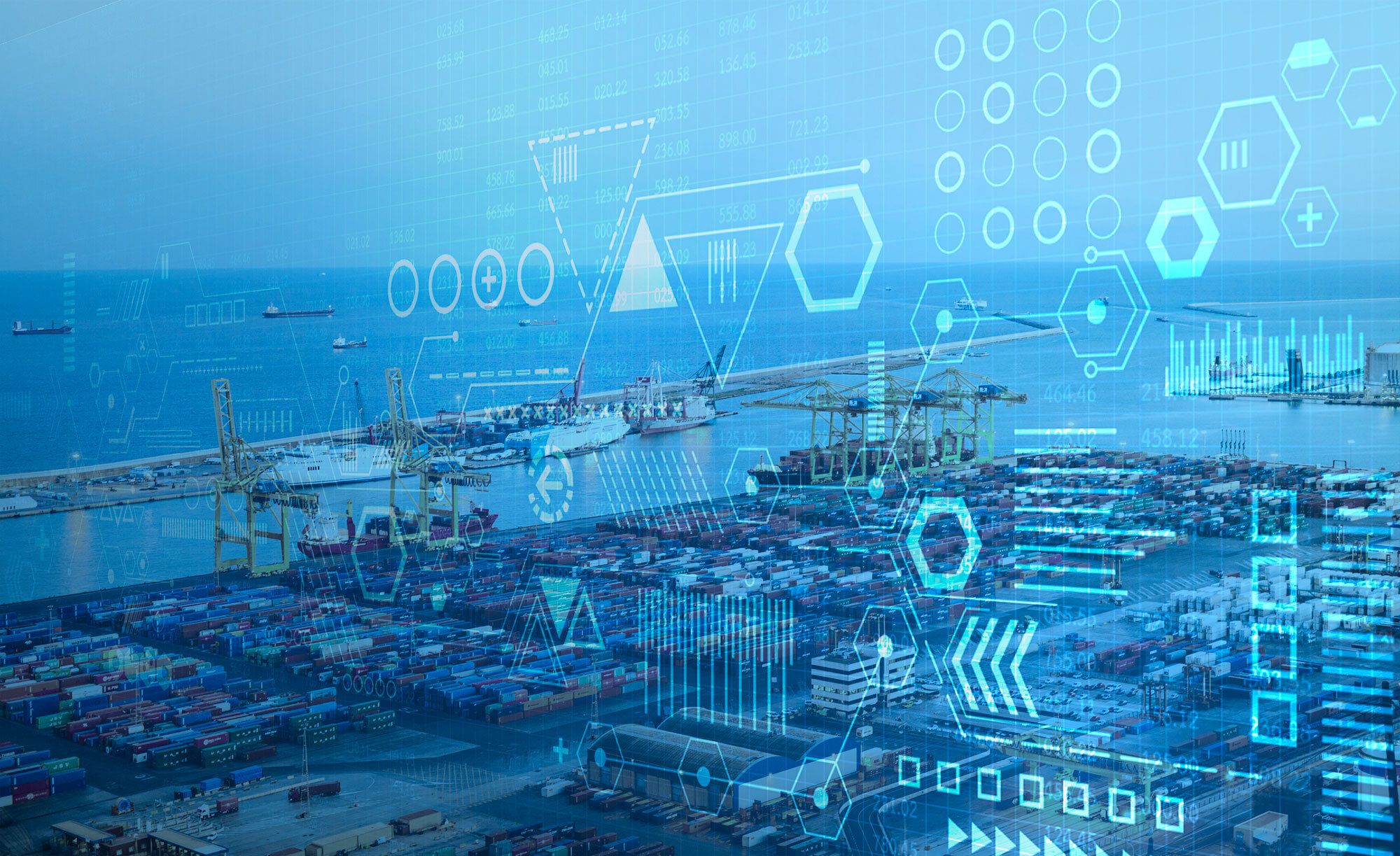Around 90% of the traded goods in the world spend at least some time at sea. As such, the world’s ports are essential cogs in the global trade. Connecting major trade routes and enabling the import and exports of goods and cargoes of all kinds. The traffic at cargo ports is projected to hit 988 million TEU by 2027. Here are the top ten busiest container ports in the world, ranked by annual container traffic.
- Port of Shanghai: 49 million TEU
- Port of Singapore: 39 million TEU
- Port of Ningbo-Zhoushan: 35.3 million TEU
- Port of Shenzhen: 26.9 million TEU
- Port of Qingdao: 26.4 million TEU
- Port of Busan: 22.8m TEU
- Port of Tianjin: 21.8 million TEU
- Port of Guangzhou: 20.8 million TEU
- Port of Hong Kong: 14.3 million TEU
- Port of Rotterdam: 13.4 million TEU
The traditional port world is changing, demographical, technological, and sustainability drivers are affecting the daily business and shaping several important trends. As a port authority, port operator, policy developer or organization active in the port value chain, it is important to know which changes will most likely occur and what the outcome will be for the maritime sector.
It is expected that trade routes, the competitive position of stakeholders, ecosystems, and the cargo distribution will be different as we know it today. It is important for the industry’s stakeholders to consider these trends and to prepare with appropriate policies and strategies.
As one of trend in this industry, maritime digitalization is vital to business competitiveness and international trade. The rapid digitalization of maritime trade can also catalyze innovation and yield greater operational efficiency in the maritime transport chain. The Maritime and Port Authority of Singapore (MPA) recognizes that digitalization is a key driving force that will help transform the industry and secure Singapore’s position as a leading international maritime center.
As part of its strategy to enhance digitalization, MPA has implemented the following initiatives:
(digitalPORT@SG™ | Maritime & Port Authority of Singapore (MPA))
- Singapore Maritime Data Hub (SG-MDH) is a data sharing and digital connectivity platform for industry/technology partners to collaborate and integrate their systems to catalyze the development of innovative solutions for the maritime industry to enhance operation efficiency and productivity.
- digitalPORT@SG™ (Portal for One-stop Regulatory Transactions) is Singapore’s maritime single window to enable more efficient, seamless and integrated port services, and will pave the way for further digitalization of port and marine services.
- digitalOCEANS™ (Open/Common Exchange And Network Standardization) fosters interoperability between digitalPORT@SG™ and other digital platforms through the use of common data standards and Application Programming Interfaces (APIs).
Together, they form the core of Singapore’s digital port ecosystem, where SG-MDH is the backbone for data infrastructure supporting the services in digitalPORT@SG™, while digitalPORT@SG™ is the key node for digital connectivity from the Port of Singapore, and digitalOCEANS™ provides data and API standards to foster interoperability with other digital platforms.
The digital port ecosystem helped to reduce the administrative burden for shipmasters during port calls and while reporting formalities, allowing them to focus on their primary responsibility, that of navigating ships safely. It has also helped to save an estimated 100,000 man-hours per year for the industry. New services such as crew changes and Just-in-Time arrival are also being implemented as MPA continues its efforts to drive the transformation of the maritime industry during the COVID-19 pandemic.



